Oklahoma Duck Hunting Guides have the answers. The Sooner state is great for hunting waterfowl with over 23 different species. Oklahoma Duck Hunting Guides: Species Opportunities will give waterfowlers valuable information. Dabbling ducks such as mallards, wigeon, teal, pintail, and gadwall are common in Oklahoma, and diving ducks such as scaups, canvasbacks, and redheads. Geese found in Oklahoma include snow geese, blue geese, and Canada geese! We will break down the most common waterfowl found on our hunts. We always like to start with some of our most frequently asked questions. Please note the table of contents at the top of this blog post. We have a lot of information in this post, so please feel free to browse the contents.
FAQ OKLAHOMA DUCK HUNTING GUIDES: SPECIES OPPORTUNITIES
Dabbling Ducks include:
Mallards | Green-Winged Teal | Northern Pintail | American Wigeon | Gadwall | Wood Duck
Diving Ducks include:
Canvasback | Redhead | Ring-necked | Lesser Scaup | Greater Scaup | Hooded Merganser
What are dabbling Ducks?
Dabbling ducks are often called puddle or dabblers because they like to stay close to lakes, ponds, and other bodies of water. They feed on the mud at the bottom of these bodies of water for food. Dabbling ducks include mallards, teals, wood ducks, mergansers, and goldeneyes. A lot of people that hunt these birds know them as dabbler ducks. If you want to find out more about what a dabbler duck is then keep reading!
What are diving Ducks?
Diving ducks are a group of waterfowl. They typically feed by diving beneath the surface to retrieve their prey, which consists mainly of fish and invertebrates.
Mallard Duck Hunting Oklahoma
As the leaves begin to fall and winter sets in, you may be wondering where all the ducks are. The answer is that they’re migrating south for the winter. When do mallards migrate? Mallard Migration patterns vary depending on their location with some regions seeing them leave as early as September while others can see them stay until November or December. This page will focus on information about mallard migrations with a map of their current distribution shown below. Mallards are most commonly found in Oklahoma, Texas, Canada, Nebraska, Kansas, New Mexico, North-South Dakota, and Colorado. Male Mallards have a dark, iridescent-green head and bright yellow bill. They are sandwiched between brown on their chests with black backsides to complete the image of this bird in its natural habitat! Females can also get these same markings as males but they will be mottled instead; while juveniles look like little copies from an older female – you might find both genders sporting some orange feathers at times too if there were no other mallard around for comparison sake. For more information please follow Mallard Ducks.

MEASUREMENTS
Both Sexes
Length: 19.7-25.6 in (50-65 cm)
Weight: 35.3-45.9 oz (1000-1300 g)
Wingspan: 32.3-37.4 in (82-95 cm)
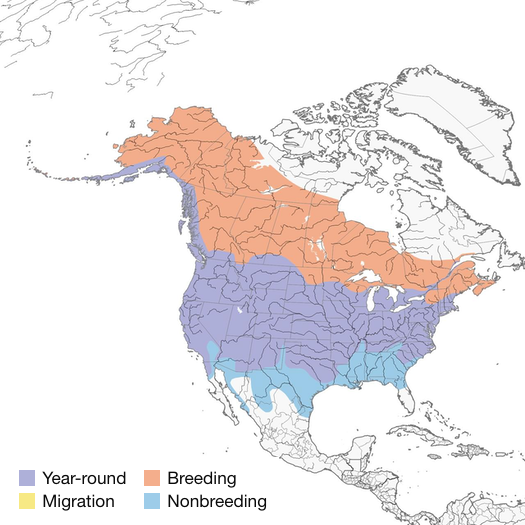
Green-winged Teal Duck Hunting Oklahoma
The Green-Winged Teal is a duck that can be found migrating and wintering anywhere from the southern United States to as far north as Canada. It is an incredibly resourceful bird, preferring wetlands for its habitat but also using agricultural fields and suburban settings when necessary. Green-winged teals are often hunted, due to their delicious meat that tastes similar to waterfowl with dark meat. The males of this species have a distinctive green head that is bordered by black stripes on their neck. Females have brown heads with darker markings around the eyes and throat area. Both sexes have an orange bill with a black tip on it. Their body is covered by white feathers with dark brown spots or mottling all over them, which gives them camouflage while hunting for food near lakes or ponds during daytime hours of activity when most other birds are sleeping!
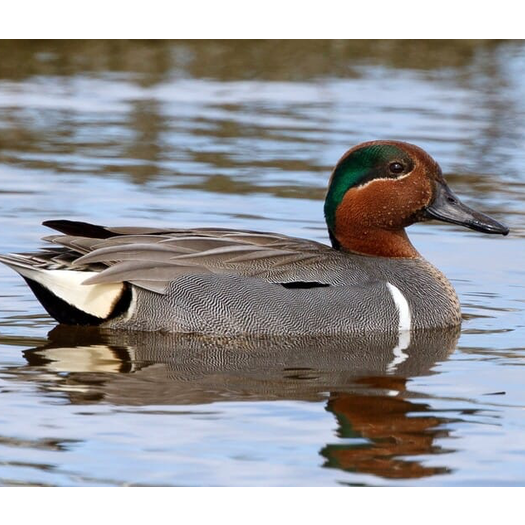
MEASUREMENTS
Both Sexes
Length: 12.2-15.3 in (31-39 cm)
Weight: 4.9-17.6 oz (140-500 g)
Wingspan: 20.5-23.2 in (52-59 cm)

Northern Pintail Duck Hunting Oklahoma
Northern Pintail Ducks migrate to the southern United States in winter. These ducks will spend their summers up north, migrating to warmer climates during the cold winter months. They typically migrate back north for breeding purposes or nesting season. The northern pintail duck is a small bird, measuring around 24-26 inches long and weighing about 1 pound. During migration, these birds can fly up to 100 miles per day!
Breeding male Northern Pintails stand out with a gleaming white breast and neck, while females are browner. In-flight they flash an orange speculum that almost looks like it could be fire! Males also have darker plumage during molting periods in which the female has a tan face unmarked and dark bill feathers.
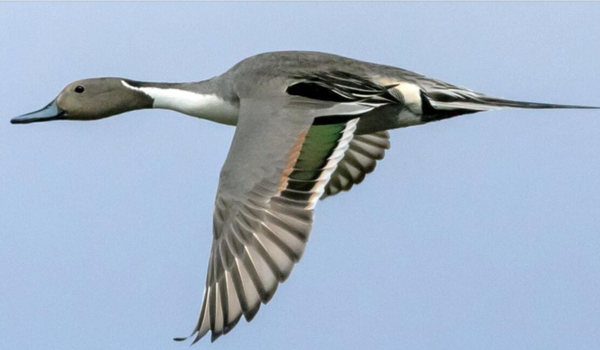
MEASUREMENTS
Both Sexes
Length: 20.1-29.9 in (51-76 cm)
Weight: 17.6-51.1 oz (500-1450 g)
Wingspan: 34.0 in (86.4 cm)
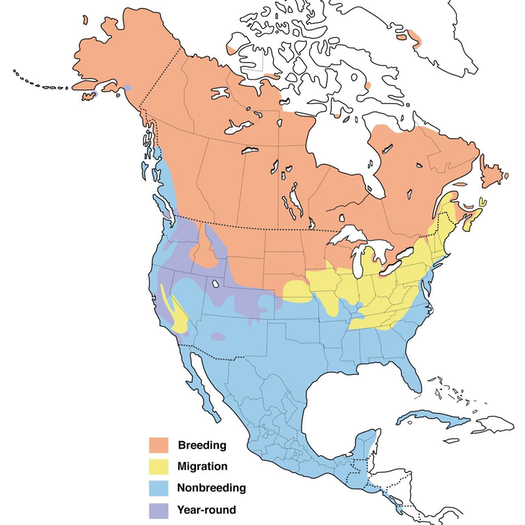
American Wigeon Duck Hunting Oklahoma
The American Wigeon is an auspicious duck with style. Males have a green eye patch and white crown, earning them the nickname “baldpate.” Females are brown in coloration but lack most of this bird’s flair–they simply look like any other female ducks out there! Despite its commonness, however, populations continue to decline due primarily due to their reliance on wetland habitats for food sources. Breeding males of this species have a unique coloration. They are brown with green stripes behind their eyes and on the top of the head where it becomes white, making them easy to spot in flight or when resting among vegetation. The body is pale cinnamon overall aside from patches that contrast against black under tail feathers.
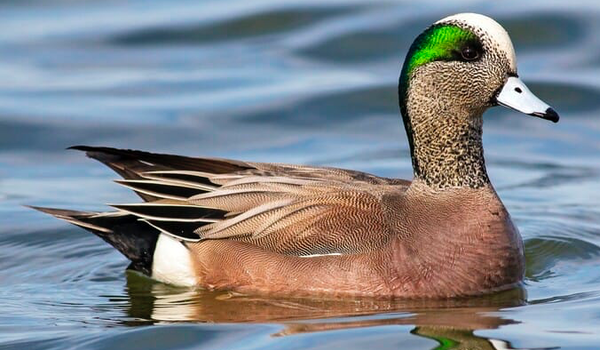
MEASUREMENTS
Both Sexes
Length: 16.5-23.2 in (42-59 cm)
Weight: 19.1-46.9 oz (540-1330 g)
Wingspan: 33.1 in (84 cm)
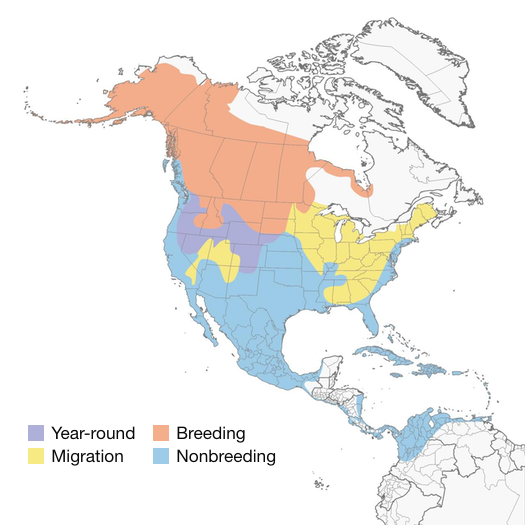
Gadwall Duck Hunting Oklahoma
Male Gadwall Ducks are gray-brown with a black spot at the tail. Females have brown and buff patches on their bodies and have orange edges to their bills. Both sport white wing markings that can sometimes stand out against other patterns during motion. During the peak of Gadwall breeding, females produce an egg a day and eat more invertebrates than males. In order to meet their demand for protein during this stressful time-the female eats up all her reserves from last winter while also feeding on smaller fish like chubs or daces.
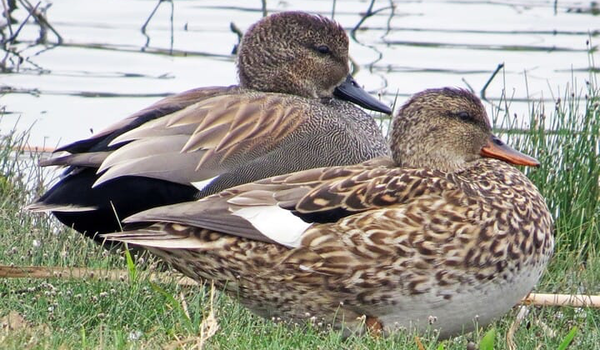
MEASUREMENTS
Both Sexes
Length: 18.1-22.4 in (46-57 cm)
Weight: 17.6-44.1 oz (500-1250 g)
Wingspan: 33.1 in (84 cm)
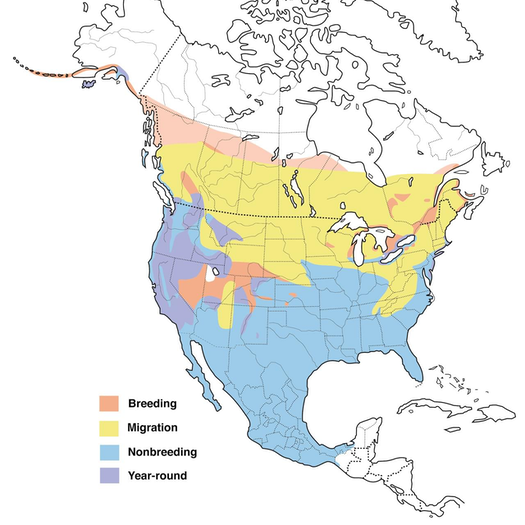
Wood Duck Hunting Oklahoma
The Wood Duck is one of the most stunningly pretty waterfowl. Males are iridescent chestnut and green, with ornate patterns on nearly every feather; females have a distinctive profile that makes them stand out in their natural habitat – which consists primarily of forests or wooded swamps where they nest in holes from trees or boxes placed around lakes margins This specific type also happens to be equipped with strong claws so it can grip bark when necessary as well perch up high off branches for safety purposes.
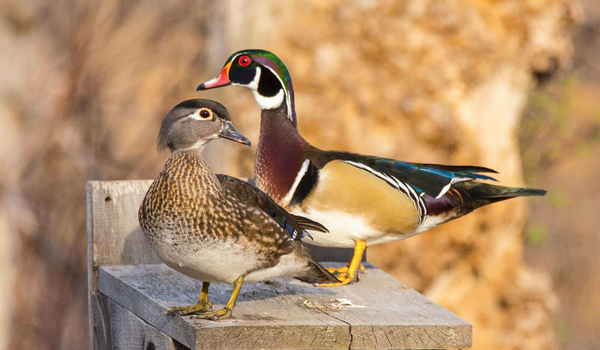
MEASUREMENTS
Both Sexes
Length: 18.5-21.3 in (47-54 cm)
Weight: 16.0-30.4 oz (454-862 g)
Wingspan: 26.0-28.7 in (66-73 cm)
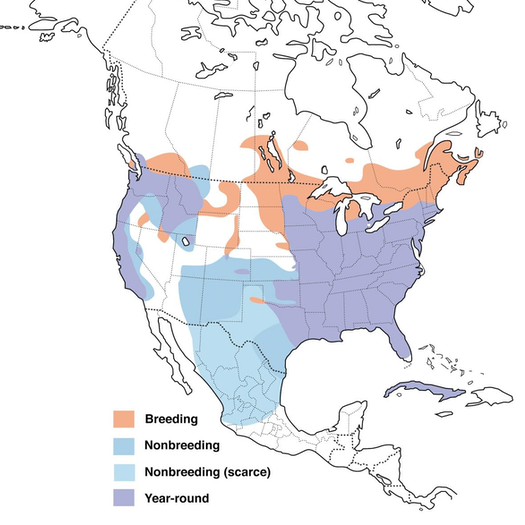
Canvasback Duck Hunting Oklahoma
The Canvasback is a difficult duck to miss. Its sloping forehead gives it an air of distinction, and males stand out from females with their rusty head and neck bookended in black or white respectively. This diving bird eats plant tubers at the bottom lakes, and also breeds in lakes, ponds, and wetlands. The Canvasback migrates in the winter to Oklahoma and is a common bird for Oklahoma Duck Hunting Guides to target.
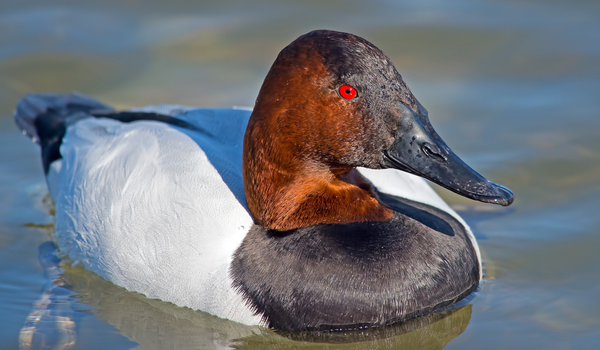
MEASUREMENTS
Both Sexes
Length: 18.9-22.1 in (48-56 cm)
Weight: 30.4-56.0 oz (862-1588 g)
Wingspan: 31.1-35.0 in (79-89 cm)
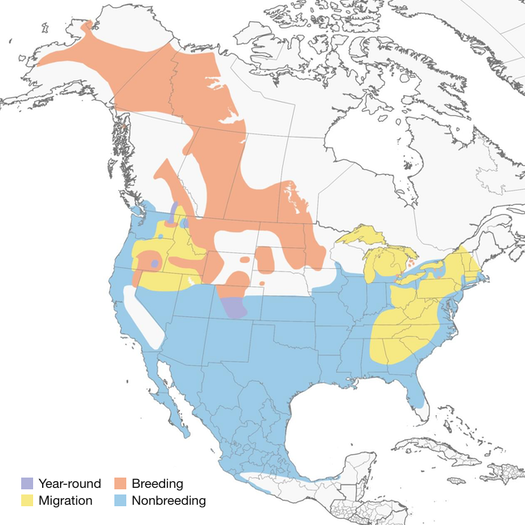
Redhead Duck Hunting Oklahoma
Adult males of the redhead variety are beautiful to look at with their cinnamon-colored heads and black-tipped bill. These sociable ducks molt, migrate or winter in sometimes huge flocks in Southern Oklahoma. Redhead Ducks nest in reedy ponds and are a favorite target of ODHG.
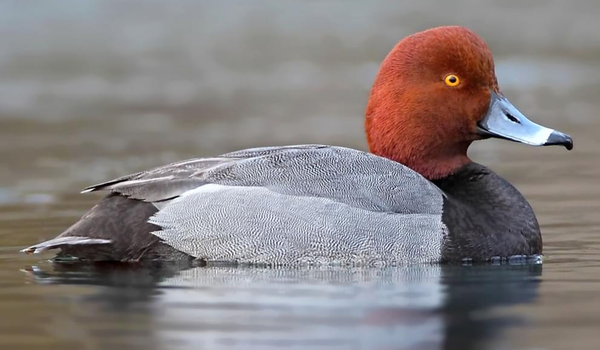
MEASUREMENTS
Both Sexes
Length: 16.5-21.3 in (42-54 cm)
Weight: 22.2-52.9 oz (630-1500 g)
Wingspan: 29.5-31.1 in (75-79 cm)
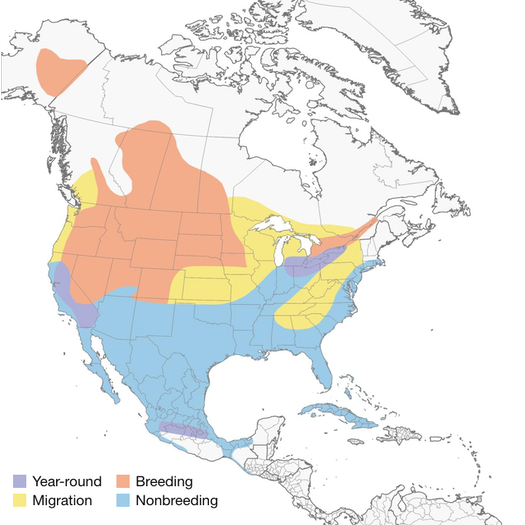
Ringed-neck Duck Hunting Oklahoma
The male Ring-necked Duck is a bird that has black and white colors with gray on it. Females are brown with a face pattern. It lives in shallow water such as ponds, beaver swamps, and bays. This duck dives for its food more than other ducks do. You can find it near ponds during migration season.
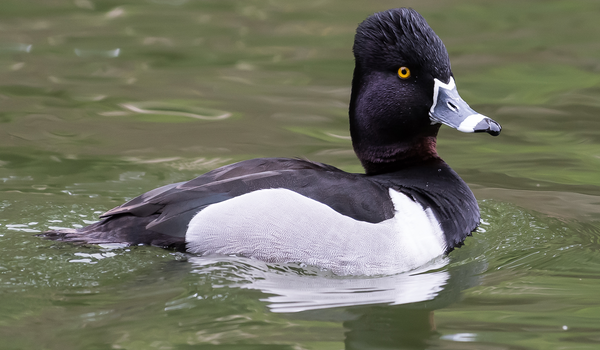
MEASUREMENTS
Both Sexes
Length: 15.3-18.1 in (39-46 cm)
Weight: 17.3-32.1 oz (490-910 g)
Wingspan: 24.4-24.8 in (62-63 cm)
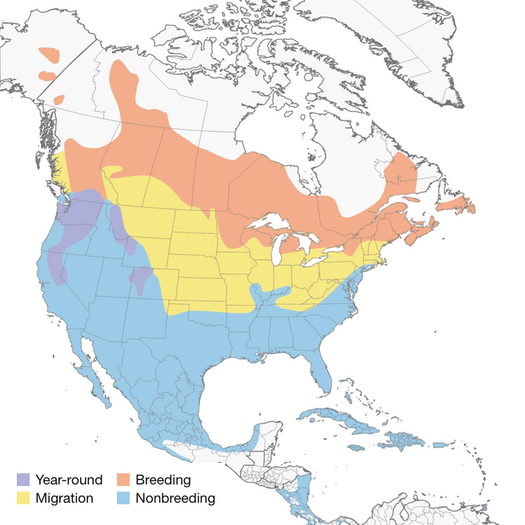
Lesser Scaup Duck Hunting Oklahoma
Lesser Scaup are birds that join together in large groups when they migrate. When you get close, you can see the males and females. The males are black-and-white with a small hat on their head, while the females are brown with no hats. You can tell them apart from Greater Scaups by their round heads instead of Lesser Scaups’ pointed ones.
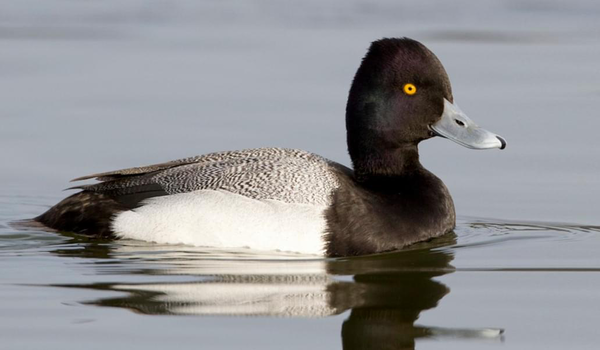
MEASUREMENTS
Both Sexes
Length: 15.3-18.1 in (39-46 cm)
Weight: 16.0-38.4 oz (454-1089 g)
Wingspan: 26.8-30.7 in (68-78 cm)

Greater Scaup Duck Hunting Oklahoma
The Greater Scaup duck is the only kind of duck that lives in the tundra. They live in North America and Europe. These ducks also live by the Pacific and Atlantic coasts during winter. The males are white with black markings, and the females are brownish-gray. Sometimes, they look just like Lesser Scaups except for their heads: Greater Scaups have round heads, while Lesser Scaups have pointed ones.
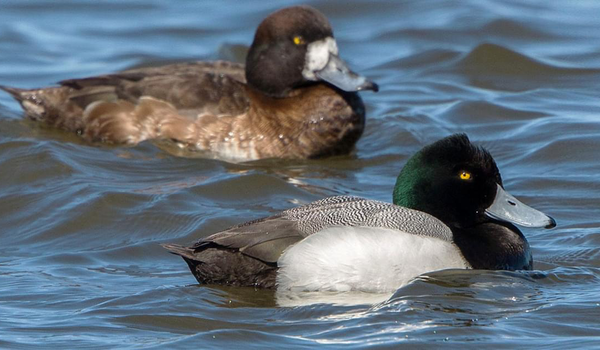
MEASUREMENTS
Both Sexes
Length: 15.3-22.1 in (39-56 cm)
Weight: 25.6-48.0 oz (726-1360 g)
Wingspan: 28.4-31.1 in (72-79 cm)
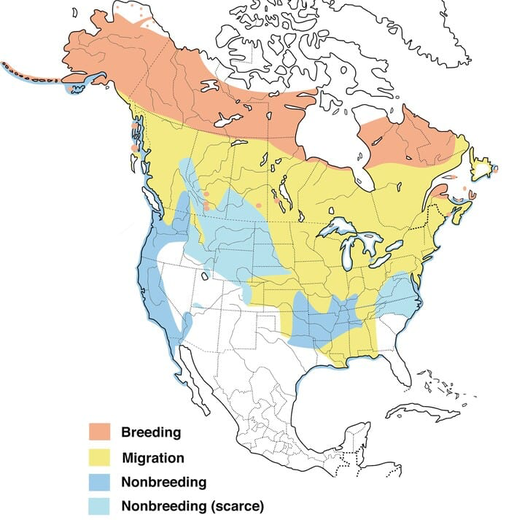
Hooded Merganser Hunting Oklahoma
The Hooded Merganser is an extravagantly crested little duck with males that are a sight to behold. They sport black-and-white patterns on chestnut flanks, and their cinnamon crest makes for its own elegance when in comparison to the dullness of most females. This bird can be found all across North America; they nest anywhere there’s ample tree cavity space available like shallow ponds or wetlands. Fish make up much of what this species feeds upon–though any type will do if offered enough time!
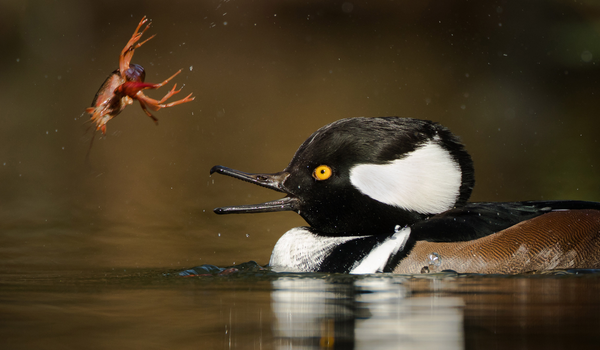
MEASUREMENTS
Both Sexes
Length: 15.8-19.3 in (40-49 cm)
Weight: 16.0-31.0 oz (453-879 g)
Wingspan: 23.6-26.0 in (60-66 cm)
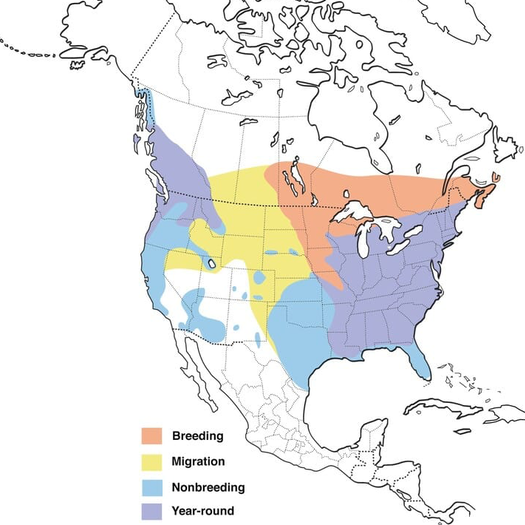
0 Comments